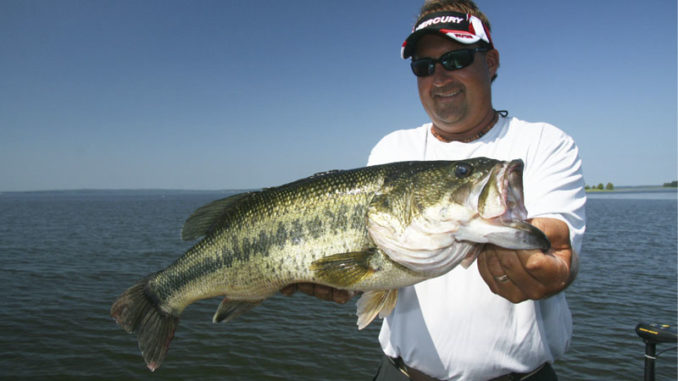
Cover is king when Santee Cooper’s spawning bass move into the shallows.
For most of the year, the Santee Cooper lakes’ fish camps and public boat ramps get plenty of visitors, all kinds of people, from alligator hunters in the fall to duck hunters in the winter, to the massive year-round catfish fleet. Yet April is dominated by crazed anglers with bigmouth on the brain. It’s right in the middle of the bass spawn and a perfect time to dial in on a true, trophy largemouth.
Due to the size of the Santee Cooper system and the vast population of largemouth bass, the spawn spans several months, beginning in February and continuing well into the month of May, with April commonly noted as one of the premier options to land a lunker in the super shallows of the 177,000 surface acres of water.
Inky Davis has guided for bass on Santee Cooper for more than 35 years, and he gets pumped up during the spring because it’s a prime month to catch bass conducting their spawning rituals.
“April is a real good bedding month, with the water temperatures well into the 60s,” said Davis (803-478-7289). “The spawn is geared through water temperature, and by April, more and more fish will begin spawning in the shallow water.”
Bass move shallow in waves through end of May
Davis said that bass move shallow in groups or waves, beginning in late February and ending in May. It’s April that’s known to produce some real lunkers. In fact, a BASS tournament record was set in April 2006 by a Florida pro who mined the two lakes for more than 115 pounds over four days. It was the heaviest 4-day aggregate weight of all time.
Preston Clark, the Florida pro, hunkered down in the shallow jungles around the perimeter of the lakes. He flipped soft plastics to bedding fish secluded in thick mats of lily pads to collect his hefty stringers.
Bass bed in shallow water and will choose locations well in heavy cover. From lily pads, eelgrass and coontail to the invasive beds of hydrilla and exotic reeds, bass have tons of places to slip into seclusion.
Ideally, local angler Chris Orvin prefers to spot big, bedding females before he makes a cast. But the thick vegetation and dingy water will impair his visibility. So he relies on his experience in these areas. He keys in on a familiar combination of cover to find his bedding fish.
“Look for a bunch of reeds and then stumps around reeds (instead of) just the eelgrass and lilies. Bass prefer to bed on sandy bottoms. And the reeds will typically grow in the sandy bottoms, while lilies seem to grow in the mucky bottoms,” he said.
But don’t ignore those lilies
Yet anglers should not ignore the dense groves of lilies that grow in shallow water all around the lakes either. These mats of vegetation provide cover for small fish, crawfish and other tasty creatures that rank high on the menu for bass.
Davis looks for stumps of any kind nestled in large mats of vegetation or just alone in a cove.
“Stumps will hold fish on them from prespawn to the post-spawn period. They will be on there,” said Davis, who hunts for the stumps just under the waterline and nearly out of sight of the common angler. Look for the black spots under the water line. They are stumps, and few people will know about these stumps leaving all the fish to you.”
Vegetation covers the shallow bass havens, leaving very few openings available for easy casting. This lends itself to flipping or pitching soft plastics.
Davis uses two main types of soft-plastic lures: a heavy, Senko-type worm called a Yumdinger and a slender swimbait called a Skinny Dipper, both of which he rigs Texas-style for a weedless presentation.
Vegetation and open water both shine this month
Davis casts the Yumdinger across the mats of vegetation and allows his baits to drop into the small holes, adding a bit of motion to the lure as it falls. If there’s open water available, he’ll go with the swimbait.
“I have caught some good fish on the Skinny Dipper,” Davis said. “You can fish it under the water like a worm or pull across the surface like a buzzbait. Last spring, I caught a 10-pound, 10-ounce bass on it.
Orvin also uses the Skinny Dipper along the edges of the heavy cover. But he flips a creature bait like a Sweet Beaver in the areas of thick vegetation to target the big females on the bed. When the water is clear, he will often see them on the beds at a distance.
“For the best luck, stay way off the beds and make long casts,” he said. “Use long 7- to 7 ½-foot rods to get the lures to the fish without spooking them.”
Lake Moultrie and Lake Marion are littered with vast stretches of shallow water that vegetation covers throughout the spring. And just about every shallow cove looks as if it would hold a boatload of spawning fish. But bass will select specific coves over others with exactly the same attributes. Orvin uses locator lures with which he can cover a lot of water quickly to figure out which areas are holding the most bedding fish.
Find out where the beds are
“Use a locator bait along weed banks or small channels near potential spawning areas. You will usually only catch the buck bass, but it tells you there is a bed close by,” Orvin said. “I will pull a Skinny Dipper right below the surface or a shallow-running KVD crank bait.”
Orvin will use a stop-and-go retrieve. Or he will just burn the bait through an area to get a reaction bite from the males or from staging females preparing to spawn or departing from the beds. Both prespawn and post-spawn fish will frequent the slightly deeper areas around the bedding locations.
Typically, bass on Santee’s two lakes will bed from one end of the drainage near Bonneau on Lake Moultrie to the flooded swamps at Rimini on Lake Marion; that leaves literally thousands of acres of potential spawning habitat. Fortunately, bass choose the same areas to spawn every year, and a good spawning cove will remain as long as the water levels are sufficient.
Davis rarely works south of the I-95 Bridge in Lake Marion, but he lives in this area and has more than enough spawning water to fill up his days. Orvin’s home is on the south side of Lake Moultrie, and his home waters are along the perimeter of the lower lake. Regardless of which areas anglers choose, both lakes offer a vast area to find spawning bass in the spring time.
April is one of those perfect months, conducive for finding bass in a prespawn, spawn, and post-spawn state. Fortunately for anglers, the shallow-water playgrounds along the perimeter of the lakes will hold just about every bass in this zip code, and it’s time to secure a heavy stringer in a short period of time.
DESTINATION INFORMATION
HOW TO GET THERE — The Santee Cooper lakes, Marion and Moultrie, are located between Columbia and Charleston, just north of I-26, with I-95 crossing Lake Marion and US 52 skirting the southern edge of Lake Moultrie. All three highways offer plenty of access to the lakes, which are connected by the Diversion Canal. For a complete list of public boat landings, visit www.dnr.sc.gov/mlands/boatramp.
WHEN TO GO — The spawn begins in late February and continues through late May, with April marking the peak spawning period. Bass spawn when the water temperature rises above 69 degrees. Peak periods to catch bedding bass are three days before and three days after the full and new moon.
WHERE TO GO — Bass will move into the shallows around the perimeter of the lakes in areas covered with vegetation. Key on spots with stumps, reeds and thickets of lily pads. In Lake Moultrie, fish the Cow Pasture, the Duck Pond, Angel’s Cove, Black’s Cove, Russellville Flats, the Hatchery and other shallow areas along the shoreline. In Lake Marion, fish the shallows upstream of I-95 and places around the edge of the lake, such as Rock’s Pond, Eutaw Creek, Potato Creek, and Goat Island.
Don’t skimp on tackle, including line
LURES/TACKLE — Lure choice for bedding bass should be Senko-type baits and soft-plastics. These include creature baits, jigs, lizards, crawfish and worms. During periods between peak spawning times or in areas used by bass for staging, reaction-type lures, including spinnerbaits, jerkbaits, crankbait and others are effective for enticing strikes and locating bedding or staging fish. Rods should be medium-heavy to heavy action in 7- to 7 ½-foot lengths. Smooth, baitcasting reels with a high-gear ratio are recommended. Always use 30- to 65-pound braided line to get the fish out of the cover and to the boat quickly.
GUIDES/FISHING INFO — Inky Davis, 803-478-7289, www.bassfishingthesanteecooperlakes.com; Chris Orvin, Overdose Fishing Charters, 843-509-2306, www.overdosefishingcharters.net; Canal Lakes Fish Camp, 843-753-2271; Pack’s Landing, 803-452-5514; Black’s Camp, 843-753-2231. See also Guides and Charters in Classifieds.
MAPS — DeLorme’s South Carolina Atlas & Gazetteer, 207-846-7000, www.delorme.com, and Atlantic Mapping, Inc., www.fishingGPSmaps.com.
ACCOMMODATIONS — Canal Lakes Fish Camp, 843-753-2271; Black’s Camp, 843-753-2231; Santee Cooper Country Visitors Bureau, 803-854-2131, www.santeecoopercountry.org; S.C. Association of Visitors Bureaus, www.discoversouthcarolina.com.

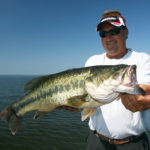
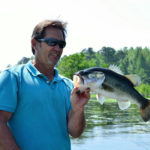
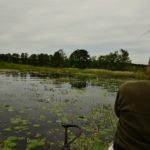
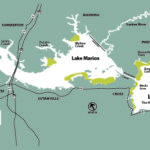




Be the first to comment